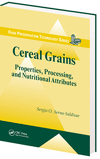Breakfast for Fitness

Breakfast eaters scored better on the first three tests. For example, those who ate breakfast could do the sprint in 4.3 seconds versus 4.47 seconds for the non-breakfast eaters. In the long jump, those who ate breakfast could jump 124 centimeters on average compared with 115 centimeters for those who skipped the meal.
“We were a bit surprised that the difference was so clear,” said Isabelle Aeberli, the leader of the study and a post-doctoral fellow at the Swiss Federal Institute of Technology Zurich.
The challenge for most moms and dads is, of course, carving out time. A survey this year by the Heart & Stroke Foundation of Canada found that half of parents said time was their biggest challenge. Another 41% said their kids had no appetite in the morning (perhaps night-time snacking is a culprit), and 29% blamed picky eaters.
The charity has launched a new campaign aimed at encouraging more Canadian children to fuel up on breakfast. “It’s giving you a good start,” said Carol Dombrow, a Heart and Stroke Foundation registered dietitian.
Breakfast can also provide some much-needed down time for both parents and kids before they rush out the door.
“We have a chance to sit down and talk about what’s coming up for the day, what we’re excited about, what may be bothering us,” said Beth-Anne Jones, a stay-at-home mother of three young boys who lives in Toronto.
Parents should aim for a balanced meal that includes fruits or vegetables for fibre, whole-grain bread, muffins or cereal, and eggs, cheese or other protein, according to Dombrow. If kids do not eat breakfast, it’s hard to meet the daily nutrient requirements for iron and fiber, Dombrow says.
Breakfasts do not require a lot of work to be effective. The children in the Swiss study, for example, typically had bread with jam, and gasp, Nutella chocolate spread, or cereal. The beverage was hot or cold chocolate milk, or Ovomaltine, a malt drink, followed by plain milk.
Looking for a reprint of this article?
From high-res PDFs to custom plaques, order your copy today!




